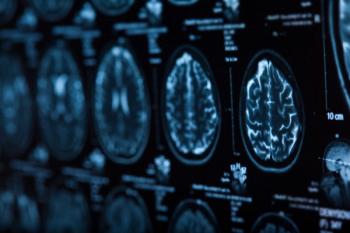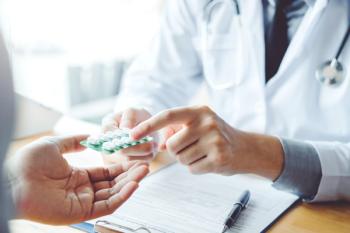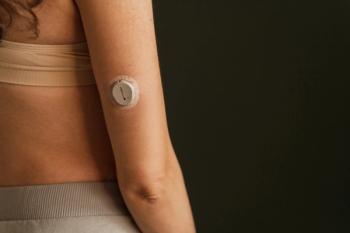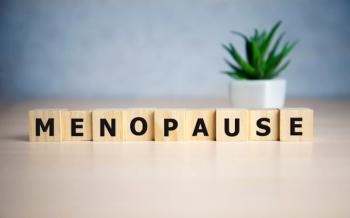
- September 2023
- Volume 89
- Issue 9
Raising Awareness About Suicidality, Self-Harm in Adolescents
With some of the most effective antidepressants containing a black box warning, safe and effective treatment for young adults is hard to come by.
DEPRESSION
Major depression is one of the most common mental disorders in the United States. For some individuals, major depression can result in severe impairments that interfere with or limit one’s ability to carry out major life activities.1
Data collected in 2021 by the National Institute of Mental Health found that an estimated 5 million adolescents aged 12 to 17 years in the United States had at least 1 major depressive episode, representing 20.1% of the US population in this age range. Furthermore, the prevalence of major depressive episodes was higher among adolescent girls (29.2%) compared with boys (11.5%) and was highest among adolescents who self-reported belonging to 2 or more races (27.2%).1
In 2021, an estimated 40.6% of adolescents in the United States with 1 or more major depressive episode had received treatment in the previous year. Among those with major depressive episodes with severe impairment, an estimated 44.2% received treatment in the past year.1
SELF-HARM
Self-harm is behavior that is self-directed and deliberately results in injury or the potential for injury to oneself. The term, also referred to as selfdirected violence, encompasses both suicidal and nonsuicidal self-injury, as well as self-harm with unclear intent.2 Self-harm is an expression of personal distress rather than an illness, although it can be linked to other mental health conditions such as depression.3
The most commonly reported reasons for nonsuicidal self-injury are reducing negative affect, self-punishment, communicating distress, and trying to change the behavior of others, according to investigators. Although it can cause short-term relief, self-harm can lead to longer-term scarring and infection, guilt and shame, and bullying from others. It is also associated with future completed and attempted suicide. Therefore mental illness is seen as an important public health concern.3
WARNING SIGNS OF SELF-HARM
Adolescents will often wear clothes that may seem unseasonal, such as long sleeves/pants in warm weather, to cover cuts, bruises, burns, and other injuries. They will often report accidental injuries and keep sharp items or other self-harm tools on hand. Relationships with others may become difficult, and emotions may change quickly or become intense.4
BLACK BOX WARNING
In October 2004, the FDA issued a black box warning indicating that the use of certain antidepressants to treat major depressive disorder in adolescents may increase the risk of suicidal ideations and self-harm behaviors.5 In 2006, the FDA warning was extended to include young adults aged up to 25 years, an announcement that followed a myriad of media reports about the link between antidepressant drug use and suicide. These reports may have culminated in an exaggerated alarmist message, according to some experts,5 but the underlying concern remains of interest.
This issue remains controversial because a causal relationship cannot be established with certainty until there is a vast improvement in postmarketing surveillance. Since these black box warnings have been required, little research has been published that can resolve the concerns.
This knowledge gap has created a significant conundrum for clinicians. Some of the most effective antidepressant medications are not being used in adolescents because of the potential for increased self-harm. Without appropriate medications, adolescents are experiencing depression and hopelessness with no treatment in sight.
NEW STUDIES
One recent study was performed to determine whether self-harm was greater at the beginning of antidepressant therapy or when therapy was discontinued. Their findings determined that adolescent girls aged 12 to 17 years had an increased risk of self-harm during the first few weeks of therapy compared with boys of the same age. They also found that men were at a slightly higher risk for self-harm at the beginning of therapy at age 18 to 24 compared with women. The investigators found no statistical difference in risk when medication was discontinued.6
These findings show windows of opportunity to closely monitor young patients at the start of therapy to ensure safety and efficacy.
Another study has evaluated the utility of pharmacogenetic phenotypes of the cytochrome P450 system on the metabolism of certain antidepressants and their associated outcomes, showing that rapid metabolizers experienced fewer thoughts of self-harm than poor metabolizers.7
CONCLUSION
The adolescents of today have more and different challenges than those in the past. Everything is digital, so all pressures are magnified; everything on social media lives there forever, and the world is generally not as safe as it used to be.
Studies like those listed here are investigating ways to treat depression in adolescents safely and efficiently, thereby decreasing the incidence of self-harm they are experiencing.
As pharmacists, we should be counseling adolescents who are starting a new antidepressant and their caregivers on the risks associated with suicidal ideation and self-harm. Know the warning signs and communicate those to them, as well.
ABOUT THE AUTHOR
Kathleen Kenny, PharmD, RPH, earned her doctoral degree from the University of Colorado Health Sciences Center. She has more than 25 years of experience as a community pharmacist and works as a clinical medical writer based out of Homosassa, Florida.
REFERENCES
- Major depression. National Institute of Mental Health. Updated July 2023. Accessed August 14, 2023. https://www.nimh.nih.gov/health/statistics/major-depression
- Treatment for suicidal ideation, self-harm, and suicide attempts among youth. Substance Abuse and Mental Health Services Administration.December 2020. Accessed August 14, 2023. https://store.samhsa.gov/sites/default/files/pep20-06-01-002.pdf
- Wilkinson PO, Qiu T, Jesmont C, et al. Age and gender effects on nonsuicidal self-injury, and their interplay with psychological distress. J Affect Disord. 2022;306:240-245. doi:10.1016/j.jad.2022.03.021
- McKean A, Rahmandar MH. When children and teens self-harm. HealthyChildren.org. Updated March 1, 2023. Accessed August 14, 2023. https://www.healthychildren.org/English/health-issues/conditions/emotional-problems/Pages/when-children-and-teens-self-harm.aspx
- Ho D. Antidepressants and the FDA’s black-box warning: determining a rational public policy in the absence of sufficient evidence. Virtual Mentor. 2012;14(6):483-488. doi:10.1001/virtualmentor.2012.14.6.pfor2-1206
- Bartelt K, McNitt J, Vitek G, Barkley E. Greatest risk of self-harm occurs early in depression treatment. Epic Research. Updated May 10, 2023. Accessed August 14, 2023. https://epicresearchblob.blob.core.windows.net/cms-uploads/pdfs/greatest-risk-of-self-harm-occurs-early-in-depressiontreatment.pdf
- Thiele LS, Ishtiak-Ahmed K, Thirstrup JP, et al. Clinical impact of functional CYP2C19 and CYP2D6 gene variants on treatment with antidepressants in young people with depression: a Danish cohort study. Pharmaceuticals(Basel). 2022;15(7):870. doi:10.3390/ph15070870
Articles in this issue
about 2 years ago
Pharmacists Pet Peeves: September 2023about 2 years ago
Interactive Case Studies: September 2023about 2 years ago
Tenth Circuit Decision Invalidates Oklahoma PBM Rulesabout 2 years ago
It’s Time to Gear Up for Fall Vaccinesabout 2 years ago
Menopause Condition Watchabout 2 years ago
Case Studies: Influenzaabout 2 years ago
Generic Product News - September 2023about 2 years ago
September 2023: RX Product Newsabout 2 years ago
Preserving Patient Access to Compounded Medications Act of 2017Newsletter
Stay informed on drug updates, treatment guidelines, and pharmacy practice trends—subscribe to Pharmacy Times for weekly clinical insights.

















































































































































































































